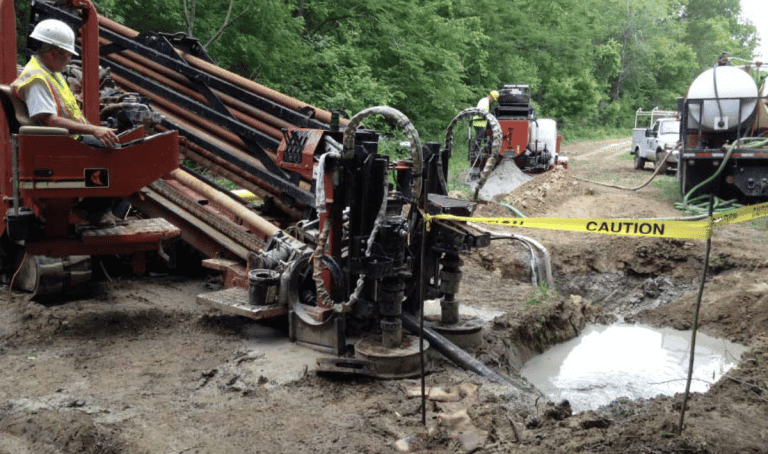Horizontal Drilling: An Vital Instrument for Modern Engineering

Horizontal drill technology, also known as HDD, has emerged as an essential method for today's engineering and construction projects. This advanced drilling approach allows for the placement of infrastructure and pipelines with negligible interference to the local ecosystem, therefore making it a suitable choice for cities and delicate ecosystems. As https://etextpad.com/ expand and infrastructure demands change, HDD is becoming a critical instrument that not only enhances project efficiency but also addresses ecological issues.
Understanding what horizontal directional drilling is and how it works is crucial for those engaged in construction, utility installation, or civil engineering. With a blend of advanced technology and skilled workmanship, HDD allows for the precise drilling of underground paths, opening doors for the installation of water, sewage, communication, and energy systems with exceptional precision. As we delve deeper into the advantages and applications of HDD, it becomes increasingly clear why this method is gaining traction in both major projects and minor, residential initiatives.
Grasping Sideways Navigational Drilling
Horizontal Navigational Boring, or HDD, is a complex trenchless engineering technique employed for installing subsurface infrastructure without the necessity for large-scale earthworks. This approach involves drilling a test bore through a established route, subsequently the enlarging of this cavity to create a wider cavity through which cables or cables can be installed. HDD is particularly beneficial in metropolitan settings where conventional open-cut techniques would be problematic and inefficient.
The process begins with the installation of the drilling tools at the inlet site, next the placement of a drill tool. This boring tool is controlled through the ground to attain the outlet site, utilizing cutting-edge technology that enables for accurate control.
As the pilot bore is made, it can be progressively increased to accommodate the necessary service pipes. This approach lessens ground disruption and preserves the continuity of the nearby infrastructure, making it a preferred choice for many initiatives.
HDD is flexible and can be employed for diverse applications, including hydrological, wastewater, electrical, telecommunications, and additional utility setups. Its flexibility to navigate challenging environments, such as rocky terrain and sensitive ecological areas, more highlights its value in current engineering. By employing HDD, engineers can confirm that critical infrastructure is laid with minimalized influence on the ecosystem and adjacent populations.

Advantages and Applications of HDD
Horizontal Directional Drilling offers a range of benefits that make it a preferred method for various utility deployments. One of the primary advantages is the potential to install underground utilities without the need for major ground disturbance. This approach minimizes the effects on the local environment and current infrastructure, making it suitable for metropolitan regions where land is constrained and restoration costs can be elevated. Additionally, HDD allows for the installation of utilities across obstacles such as highways and water bodies without interrupting the surface, enhancing operational efficiency and shortening project timelines.
In terms of uses, HDD is adaptable and is commonly used in projects related to telecommunications, water supply, wastewater, and sustainable energy infrastructure. Its accuracy and flexibility allow for the installation of fiber optics in urban settings, significantly contributing to the expansion of telecommunications networks. Moreover, HDD is vital in modernizing water and sewer lines, ensuring that necessary utilities can be improved without large impacts to the public. As infrastructure needs continue to develop, HDD's role in supporting these utilities becomes more important.
As we gaze into the future, the potential of HDD are expected to grow, particularly with developments in technology. The inclusion of Global Positioning System and other technologies enhances the precision and productivity of projects, ensuring that HDD remains at the cutting edge of trenchless technology. From traversing challenging landscapes to adopting sustainable practices in fragile environments, HDD is well-equipped to tackle the challenges of modern engineering projects. The persistent innovations in this sector will surely spur further innovation and applications, cementing HDD's role as a significant contributor in infrastructure projects.
Future Developments and Innovations in Horizontal Directional Drilling
As the demand for effective infrastructural strategies continues to increase, HDD is set for significant progress. One important development is the integration of advanced technologies such as live data analysis and AI. These innovations allow for improved precision in drilling and superior decision-making during projects. Companies are beginning to implement predictive analytics to foresee issues before they arise, thereby improving project efficiency and reducing downtime.
Another significant innovation in HDD is the development of more environmentally friendly drilling fluids. Scientists are investigating degradable and non-toxic alternatives to conventional drilling muds, which can minimize environmental impact. This push towards sustainability is not only advantageous for the ecosystem but also increasingly required by regulatory agencies, making it critical for HDD contractors to adapt to these new solutions.
Lastly, the application of advanced GPS and positioning technologies is transforming the HDD landscape. These developments provide operators with superior tracking features, resulting in increased precise drilling routes. As Horizontal Directional Drilling projects become more complex, especially in urban environments and vulnerable areas, these technologies will play a crucial role in ensuring achievement while reducing disruptions to existing infrastructure. The continuous evolution of Horizontal Directional Drilling tools and methods promises to further reinforce its position as a leader in contemporary engineering.
